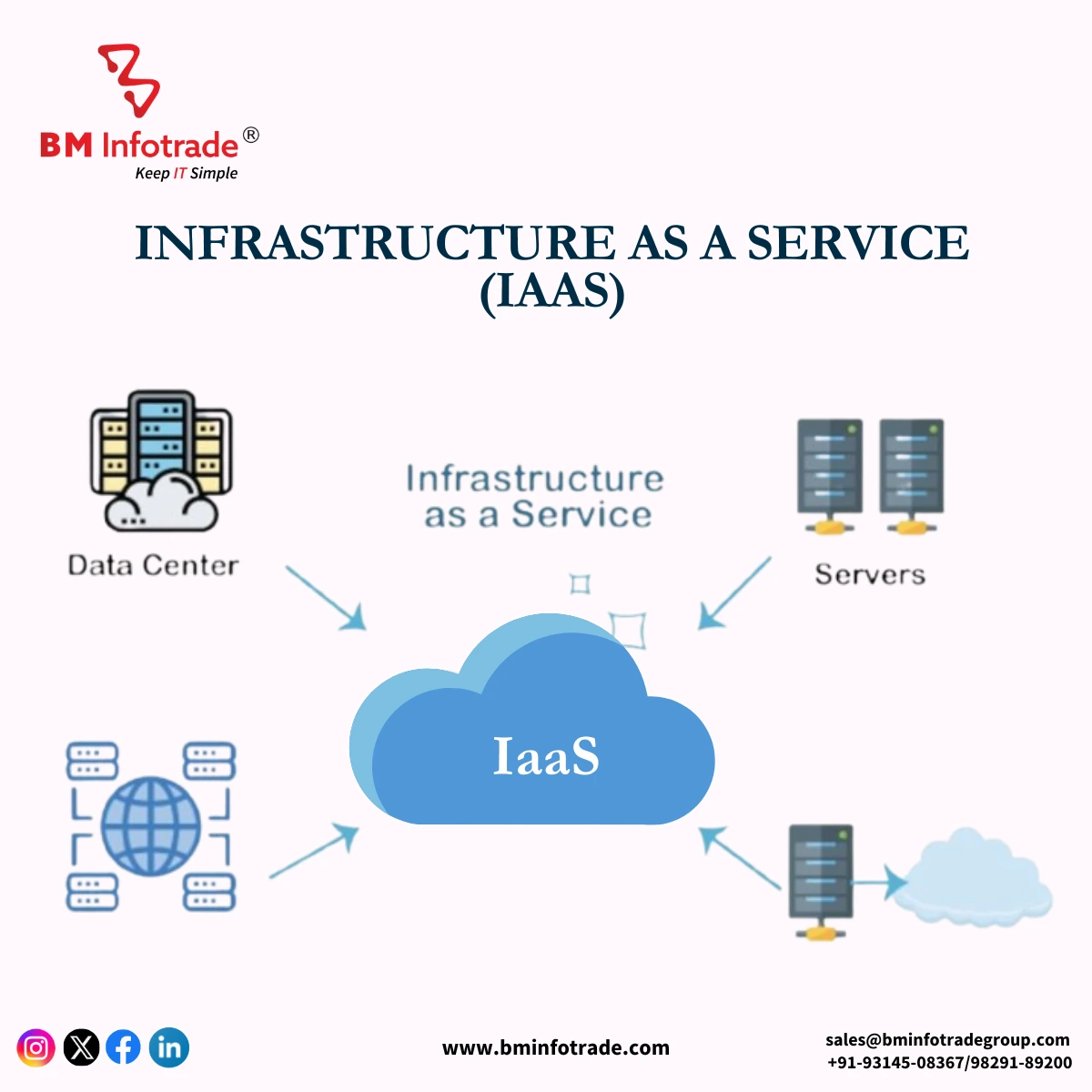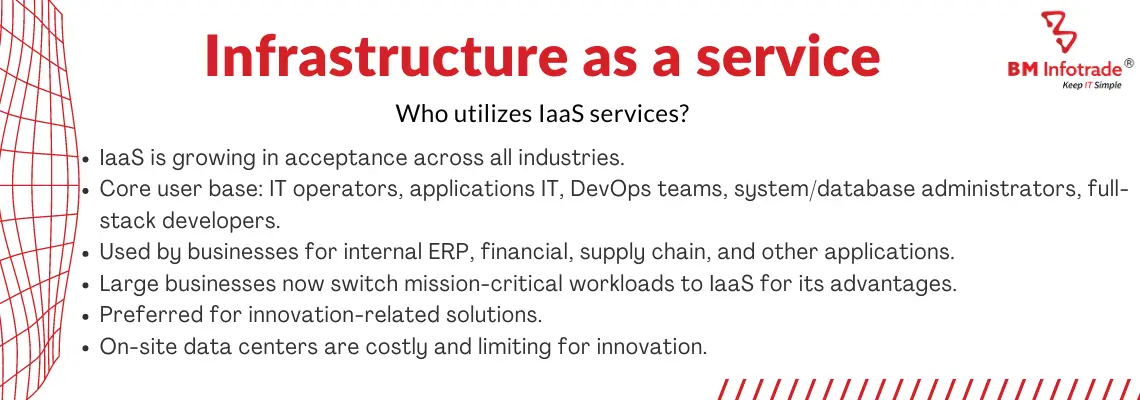What is Infrastructure as a Service / IaaS? A smarter way
Infrastructure as a Service (Iaas) is another name for "Hardware as a Service" (HaaS). It is one of the cloud computing platform's layers

What is Infrastructure as a Service / IaaS? A smarter way
Table of Contents
Iaas is another name for "Hardware as a Service" (HaaS). It is one of the cloud computing platform's layers. It enables users to contract out their IT infrastructures, including servers, networking, processing, storage, virtual machines, and other resources. Customers pay according to how often they use these resources on the Internet.
IT infrastructure was traditionally rented out for a set amount of time, with a predetermined hardware configuration. Regardless of actual use, the client paid for the setup and time. Clients can dynamically scale the configuration to meet changing requirements and are only charged for the services they actually use with the help of the IaaS cloud computing platform layer.
Every organization is freed from having to maintain their IT infrastructure thanks to the IaaS cloud computing platform layer. Three models of IaaS are available: public, private, and hybrid clouds. According to the private cloud, the infrastructure is predicated on the customer's premises. The public cloud is housed in the data center of the company that provides the cloud computing platform, and the hybrid cloud combines the best features of both private and public clouds.

Read More:- SaaS (Software as a Service)- The most reliable!
How does IaaS function?
In a typical IaaS model, a company—of any size—uses a cloud provider to obtain services like compute, storage, and databases. These services are provided by the cloud provider by hosting hardware and software there. The cost structure changes to a pay-as-you-go model because the business no longer needs to acquire and maintain its own equipment or space to house the equipment. Less is paid for when a business requires less. Additionally, as it expands, it can quickly provision more computing power and other technologies.
In an on-premises setting, a company is responsible for managing and maintaining its own data center. The company must spend money on servers, storage, software, and other technologies, and employ IT staff members or outside contractors to buy, maintain, and upgrade all the hardware and licenses. Even though sometimes workloads decline and those resources go unused, the data center must be built to handle peak demand. On the other hand, if the company expands quickly, the IT division might find it difficult to keep up.
Benefits of IaaS Infrastructure
- Creating and scaling environments for DevTest and production takes less time and money thanks to cloud infrastructure. This increases the freedom for experimentation and innovation among DevOps teams and developers.
- By providing computing services on demand, businesses are able to scale their infrastructure up or down as necessary, paying only for the services they actually use on an hourly, daily, or monthly basis. This allows them to handle higher peak loads than are typically possible in on-premises environments.
- IaaS can provide access to services and products that many businesses could not afford or could not access as quickly on-premises, such as the newest processors, storage, networking hardware, and container orchestration.
- IaaS is accessible in most regions, with a regional presence close to densely populated areas, allowing businesses to expand their online presence more quickly.
For businesses, switching to an IaaS model can be transformative, particularly for their IT departments. IT staff can devote more time to high-value tasks that increase the company's productivity and efficiency by diverting them from on-premises infrastructure management and support. In addition to lowering forecasting errors, the pay-as-you-go model keeps costs in line with actual requirements.
Who utilizes IaaS services?

IaaS is growing in acceptance across all industries, and its application space is expanding. The core infrastructure cloud user base at companies that create and manage applications consists of IT operators, applications IT, DevOps teams, systems and database administrators, and full-stack developers. Businesses that require an adaptable cloud infrastructure to support their internal ERP, financial, supply chain, and other applications use it as well.
IaaS was initially primarily utilized by cloud native organizations for workloads that were transitory, experimental, or subject to unforeseen change. Many large businesses are now switching more and more of their mission-critical back-office, systems of record, and other workloads to the IaaS model as a result of the advantages it offers.
IaaS is also rising to prominence as a preferred innovation-related solution. It is extremely difficult and expensive for businesses that still keep their data centers on-site to go beyond just keeping things running. Forward-thinking businesses are migrating their data centers to the cloud in order to stay innovative and competitive in the market. They can unleash their talent and resources to deliver the innovation they envision and expand their business by utilizing IaaS.
How significant is infrastructure as a service?
IaaS allows you to scale your compute capacity while spending less on IT. In the past, businesses owned and cared for their own computing equipment in a data center on-site. However, this frequently required a sizable initial outlay to manage sporadic spikes in workload. For instance, during the holiday season, application traffic for an e-commerce company increases by three times. They need to buy more server machines to handle this traffic, but they sit idle the rest of the year.
To address this issue, cloud service providers like AWS keep a lot of hardware devices in highly secure data centers. On a pay-as-you-go basis, they grant you access to this cloud computing infrastructure. To meet all of your business, legal, and compliance requirements, you receive flexible and secure access to practically limitless resources.
Read More:- What is Platform-as-a-Service (PaaS)? It serves as a pillar!
Conclusion
IaaS offers IT infrastructure cost reduction for small- to medium-sized businesses. IaaS is also referred to as cloud storage because it allows users to store their data in the cloud and access it from anywhere.





![Cloud Licensing and Compliance Made Easy [All-in-One Bundle]](https://bminfotrade.com/assets/upload/blog/21851766642757.png)

Anshul Goyal
Group BDM at B M Infotrade | 11+ years Experience | Business Consultancy | Providing solutions in Cyber Security, Data Analytics, Cloud Computing, Digitization, Data and AI | IT Sales Leader